Year 2005 Role Artist | Name Joy Garnett | |
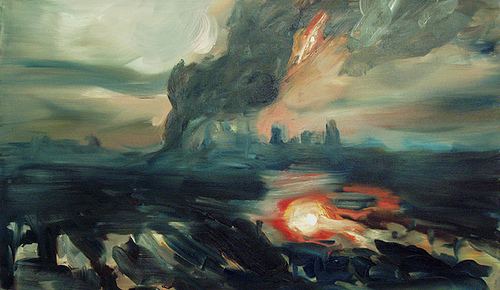 | ||
Dimensions 66 cm × 117 cm (26 in × 46 in) Location Courtesy of the National Academy of Sciences, Washington, DC Education Ecole nationale superieure des Beaux-Arts Artwork Sploosh, Poof, Molotov, Airborne, Fountain, Roil, Explosions in the Sky, O.P.P., Burst, Fan, Lost | ||
Joy garnett painting mass media
Joy Garnett (born 1965 ) is a painter and writer in Brooklyn, New York, United States. Garnett's paintings employ a range of methods including seriality, automatic writing, and the gesture to examine the intersections of media, politics and culture. She engages contemporary consumption of media and the delineation between documentary, technical, and artistic/expressive images. She is married to visual artist Bill Jones. Her maternal grandfather was the Egyptian Modernist poet Ahmed Zaki Abu Shadi.
Contents
- Joy garnett painting mass media
- What s up chelsea joy garnett and george condo
- Education and early career
- The Bomb Project
- Use of found images
- Molotov and surrounding controversy
- References
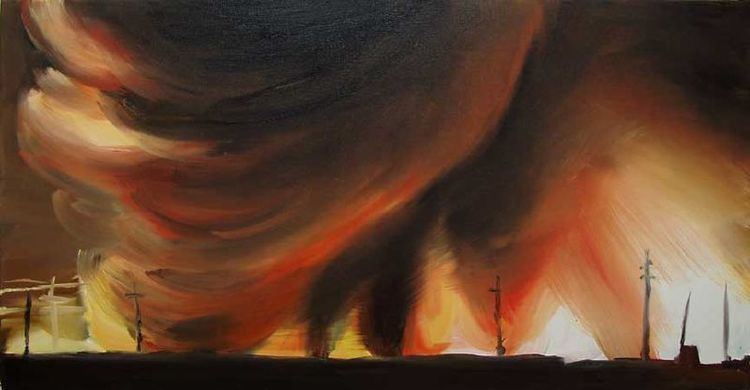
From 2005 to 2016, Garnett was Arts Editor at Cultural Politics, a contemporary culture, politics and media journal published by Duke University Press. She is the founding editor of NEWSgrist., an early e-zine and blog (ca.2000-201?).
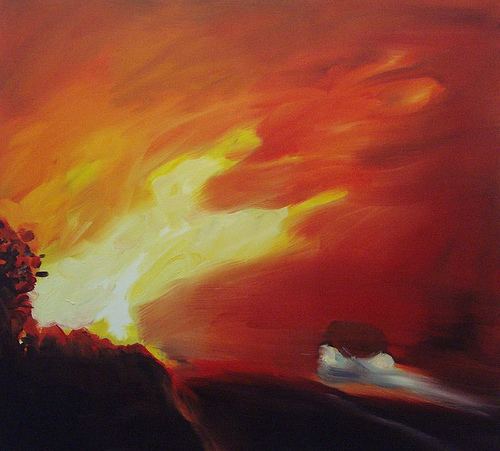
Controversy surrounding her 2003 painting Molotov has drawn international scrutiny to issues of ownership and fair use.
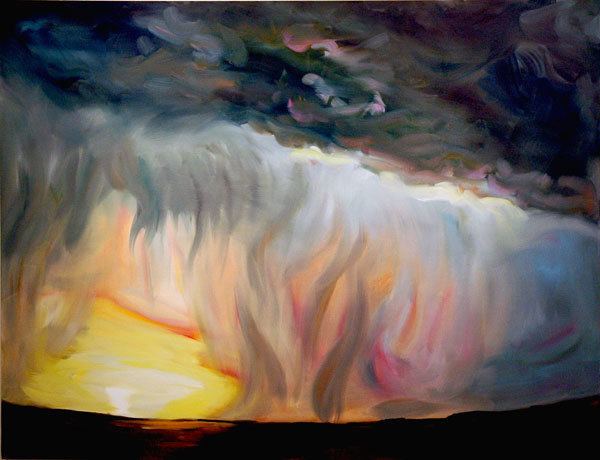
In 2004, Garnett received an Anonymous Was A Woman Award.
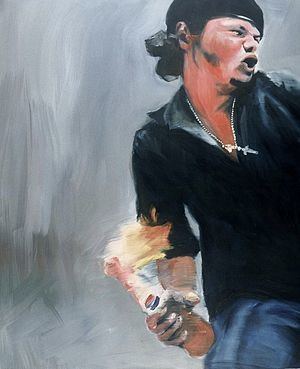
What s up chelsea joy garnett and george condo
Education and early career
Garnett completed her undergraduate work at McGill University in Quebec, Canada in 1983. In 1984 she went to Paris to study painting, and in 1985 she enrolled at École Nationale Supérieure des Beaux-Arts. She returned to New York in 1987 and began work at Watanabe Studio, Ltd. in Brooklyn, NY. In 1989 she entered the graduate program at The City College of New York; she received her MFA in 1991. While attending City College, Garnett received the Elizabeth Ralston McCabe Connor Award.
After graduating, her work was exhibited in several group shows, including at Debs & Co., New York in 1999, which also hosted her first solo exhibition the following spring, entitled "Buster-Jangle", a collection of paintings based on photos of atomic bomb tests from the 1950s that Garnett found on the web after they were released by the US government under the Freedom of Information Act. Her work was reviewed and noted for its exploration of a “paradoxical realm of terrible beauty… tying together the histories of the bomb and American landscape painting."
The Bomb Project
In 1997, while conducting research for her solo exhibition, Garnett began gathering images and documents about nuclear testing from primary sources on the Internet. Eventually this resulted in an online compilation of material known as The Bomb Project. Spawned from her extensive image search, it led to an experimental recontextualization of images in a constantly growing archive.
In creating The Bomb Project, Garnett addresses the role of the digital image as a cultural artifact, and attempts to reveal the information and hegemonic coding within these images with as little intervention as possible. She seeks to “establish a context where art, science and government are presented as interlocking and overlapping areas.” Since its launch in 2000, the Bomb Project has been expanded to include still and moving declassified imagery, as well primary source documents, links to current events and news articles. The original documentation, produced by the nuclear industry, is offered side by side with activist views, providing a context for comparative study, analysis and creativity. In its current form, the compendium is intended to be used as a resource for other artists.
Use of found images
Garnett explores the problem of the found object by re-mediating and transforming the image of a documentary/technical photograph by painting it, thereby both shifting its context and opening it up for multiple interpretations by the viewer, as is consistent within the framework and context of art.
Garnett’s work is sometimes framed as painting that responds to, engages and extends contemporary media theory.
Molotov and surrounding controversy
Garnett's 2004 exhibition Riot featured a series of paintings based on images pulled from mass media sources, depicting figures in "extreme emotional states." One of the paintings, entitled Molotov, was originally sourced from a jpeg found on the Internet that was later discovered to be a fragment of a larger photograph taken by Susan Meiselas during the Sandinista Revolution (1979). After the Riot exhibition closed, Meiselas's lawyer contacted Garnett with a cease and desist letter claiming copyright infringement and "piracy" of Meiselas' photograph. Popular support for Garnett and her artwork, marshalled via Rhizome.org, inspired a solidarity campaign called Joywar, in which images of Garnett's painting were reposted widely on the Internet, or remixed and circulated in new forms.
The incident has become a prominent case-study of re-use in art.
